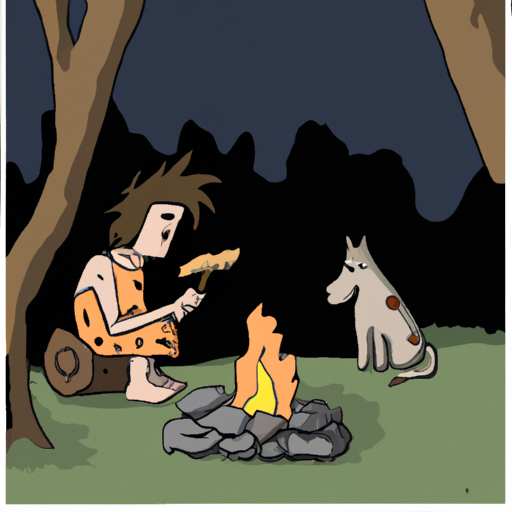Understanding Domestication
You might have heard the phrase “a dog is man’s best friend” countless times. But have you ever wondered why or how dogs became our closest companions? This tale begins with the process of domestication. Domestication is the process where humans selectively breed animals and plants for specific traits. Over generations, this process can significantly change the species.
The Origin of Dogs
We know you love your furry friend dearly, and you might be curious about their ancient ancestors.
According to researchers, the story of dog domestication begins with wolves. Around 20,000 to 40,000 years ago, humans and wolves began to interact and form a symbiotic relationship.
- Wolves’ Contribution: Wolves, with their keen senses and hunting skills, offered protection and helped humans hunt.
- Humans’ Contribution: In return, humans shared their food, providing a reliable food source for wolves.
Over time, these interactions led to the domestication of wolves, eventually giving rise to the dogs we know and love today.
The Process of Dog Domestication
Now that we know the origin of dogs, let’s delve deeper into the process of their domestication.
The dog domestication process was likely a natural occurrence rather than a deliberate human effort. Some wolves were more docile and less fearful of humans, making them more likely to approach human camps. Over time, these wolves started living closer to humans, and humans started to tolerate their presence for the benefits they offered.
Here’s a simple table to illustrate the process:
| Stage | Description |
|---|---|
| 1 | Wolves approach human camps |
| 2 | Humans tolerate wolves’ presence for their benefits |
| 3 | Over time, wolves live closer to humans |
| 4 | Humans start selectively breeding wolves for desired traits |
| 5 | Domesticated dogs emerge |
The Role of Dogs in Human Society
With their loyal and protective nature, dogs soon carved a niche for themselves in human societies. They were not just pets, but also served as hunting aids, guard dogs, herding animals, and even spiritual entities in some cultures.
- Hunting Aids: Dogs were used to track and corner prey, making hunting easier for humans.
- Guard Dogs: They protected human settlements from predators and intruders.
- Herding Animals: Dogs helped in managing livestock, keeping them together and moving them as needed.
- Spiritual Entities: In some cultures, dogs were considered sacred and were associated with various gods and goddesses.
The Impact of Dog Domestication
Dog domestication has had a profound impact on human civilization and our individual lives. Whether it’s a small lap dog or a large shepherd, our canine companions provide us with companionship, emotional support, and even health benefits. Studies suggest that having a dog can lower stress levels, increase physical activity, and even boost longevity. Indeed, dogs have earned their title as man’s best friend.
Frequently Asked Questions
Q: What was the first dog breed?
A: The Basenji is considered to be one of the oldest dog breeds.
Q: Why were dogs domesticated and not other animals?
A: Dogs were likely domesticated because of their usefulness in hunting and protection. Their social nature also made them more adaptable to living with humans.
Q: Did humans intentionally domesticate dogs?
A: It’s more likely that dog domestication was a natural process, with humans and wolves forming a mutually beneficial relationship over time.
Q: How long did it take for wolves to become dogs?
A: It’s estimated that the process took thousands of years.



